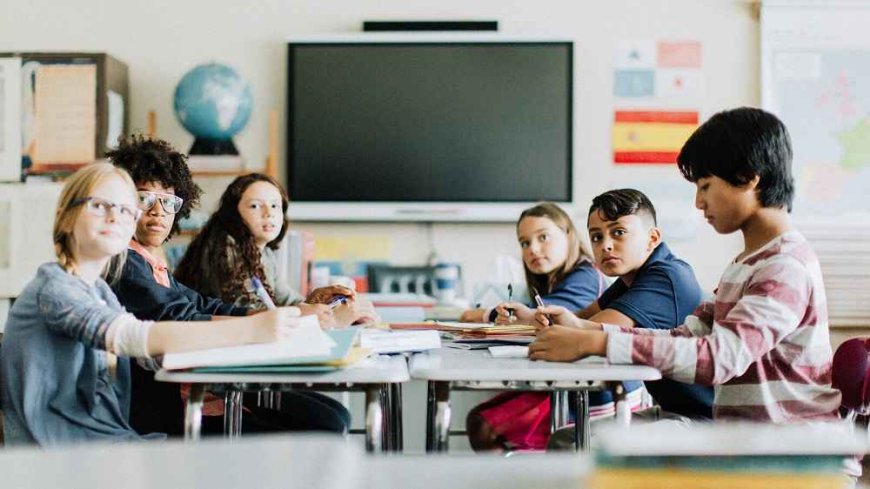Enhancing Learning with Differentiated Instruction Techniques
Catering to the diverse learning needs of students is paramount. This is where differentiated instruction techniques come

In the realm of education, catering to the diverse learning needs of students is paramount. This is where differentiated instruction techniques come into play. Differentiated instruction refers to an approach that tailors teaching methods, content, and assessment to accommodate the varied strengths, interests, and readiness levels of students. In this article, we will delve into the importance of differentiated instruction techniques and explore how they can revolutionize the modern educational landscape.
Understanding Differentiated Instruction:
Differentiated instruction recognizes that not all students learn the same way or at the same pace. It encourages educators to employ a range of strategies to engage and motivate learners. By doing so, students are more likely to develop a deeper understanding of the subject matter. This approach is not only beneficial for struggling students who might need extra support but also for advanced learners who require more challenging tasks to stay engaged.
Key Techniques for Effective Differentiated Instruction:
Varied Learning Modalities: Recognizing that students have different learning styles, educators can incorporate various modalities like visual, auditory, and kinesthetic methods. This ensures that all students can grasp the concepts in a way that resonates with them.
Flexible Grouping: Grouping students based on their interests or learning levels allows teachers to provide targeted instruction. This technique encourages collaboration and peer learning, enriching the overall classroom experience.
Tiered Assignments: Assigning tasks at different levels of complexity allows students to engage with the material at their appropriate challenge level. This ensures that no student feels overwhelmed or unchallenged.
Learning Stations: Creating different learning stations with varied activities caters to individual learning preferences. This technique empowers students to choose tasks that align with their strengths and interests.
Personalized Projects: Allowing students to choose topics of interest for projects promotes autonomy and enthusiasm for learning. It fosters a sense of ownership and investment in their education.
Adaptable Assessments: Assessments should reflect the diversity of learners. Providing options such as presentations, written assignments, or practical demonstrations accommodates different ways of showcasing understanding.
Scaffolded Instruction: Breaking down complex concepts into smaller, manageable steps helps students build a strong foundation before moving on to more advanced material.
Adjustable Pacing: Allowing students to progress at their own pace prevents the feeling of being left behind or held back. This technique is especially crucial in subjects with diverse levels of prior knowledge.
Technology Integration: Utilizing technology tools tailored to individual learning needs can be immensely effective. Interactive apps, online resources, and adaptive learning platforms offer personalized learning experiences.
Regular Check-ins: Establishing a routine of individual or small-group check-ins enables teachers to gauge each student's progress and provide targeted support as needed.
Inclusive Mindset: Embracing an inclusive mindset is at the core of differentiated instruction. Valuing and respecting diverse perspectives and learning abilities create a harmonious and encouraging learning environment.
Benefits of Differentiated Instruction:
Implementing differentiated instruction techniques yields several benefits for both educators and students. Students experience enhanced engagement, as the content becomes more relatable and challenging at an individual level. This approach also fosters a growth mindset, where students understand that effort leads to improvement, irrespective of their starting point.
Teachers, on the other hand, witness increased enthusiasm in their classrooms. Tailoring instruction to diverse needs can be creatively stimulating, making teaching a more rewarding experience. Differentiated instruction also addresses the challenge of managing classrooms with a wide range of abilities, as it provides a structured framework for catering to each student's requirements.
Challenges and Overcoming Them:
While the benefits are evident, implementing differentiated instruction is not without challenges. One common concern is the extra time required for lesson planning. To overcome this, educators can gradually incorporate these techniques, eventually streamlining the planning process.
Another challenge is assessment. Tracking individual progress when students are engaged in varied activities can be complex. However, employing technology for assessment, such as learning management systems, can simplify this aspect.
Differentiated instruction techniques have the power to transform traditional classrooms into dynamic learning environments. By acknowledging the uniqueness of each student and tailoring instruction accordingly, educators can foster a love for learning that extends beyond the classroom. As the educational landscape continues to evolve, embracing differentiation will undoubtedly lead to more effective and inclusive teaching practices.
Remember, differentiation is not just a pedagogical approach; it's a philosophy that celebrates diversity and individuality, ultimately nurturing well-rounded, lifelong learners. So, whether you're an educator or a student, consider how differentiated instruction techniques can elevate your educational journey.
